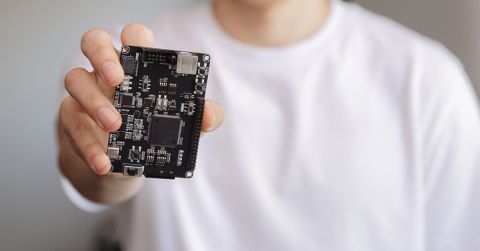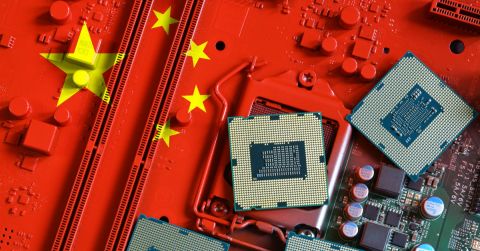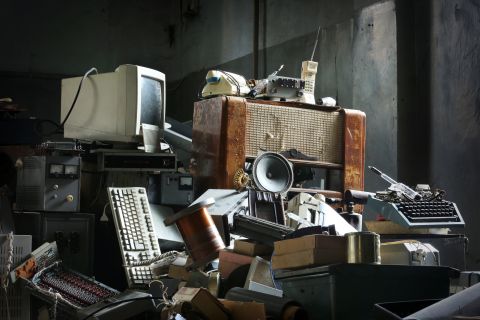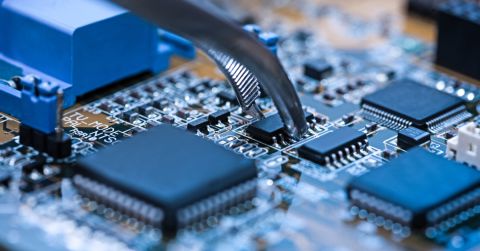Straight From the Source: Obsolescence Management with Rochester Electronics

Lifecycle status is an important piece of information when you’re choosing components for a project. After all, you don’t want to find out that a key component of your design has become obsolete after you’ve gone into production. But what about products that rely on so-called obsolete components?
For the many professionals tasked with maintaining products and systems with mission-critical components that have gone into obsolescence, building a reliable supply chain for these parts is crucial. But where do you go when a particular component becomes obsolete and is no longer widely available?
To learn more about sourcing obsolete components, we reached out to our friends at Rochester Electronics.
Once dubbed “Heroes of Obsolescence Management”, Rochester Electronics has specialized in supplying reliably sourced end-of-life and obsolete semiconductors for over 35 years, so they know a thing or two about the subject.
Octopart: To set the stage, what does it mean when a component becomes “obsolete”?
Rochester: As technology evolves and new semiconductor products increase in demand, the manufacturing volume increases. Naturally, older products are phased out. This is the obsolescence phase of the semiconductor lifecycle.
When the original component manufacturer (OCM) chooses to discontinue a product, they typically offer an end-of-life (EOL) purchase, better known as a “last time buy”. Many times, customers do not have the ability to fund these purchases or buy enough, nor do they have the storage facilities available to support future requirements.
What are the common pitfalls associated with sourcing obsolete components, and what are the trust signals people can look for to avoid these problems?
Rochester: Most industries will face component obsolescence at some point and with it, come a wide range of challenges and risks. While machine downtime and lost revenue are high on that list, health and public safety rise to the top.
Component obsolescence management becomes a critical factor in high-reliability industries such as medical, military and defense, energy, transportation, industrial and civil aviation. This practice allows for businesses to safely prepare for EOL.
Companies not prepared become vulnerable to counterfeits as well as quality and reliability issues. Even for those companies who proactively prepare, long-term component storage remains a problem.
Buying from an authorized source who partners with the original component manufacturer eliminates these risks.
What does it mean to be an “authorized source of supply”? Are there varying degrees of authorization?
Rochester: Fully authorized distributors, like Rochester Electronics, identify themselves as compliant with the SAE Aerospace Standard, AS6496. Simply stated, they are authorized by the original component manufacturer (OCM) providing traceable and guaranteed products with no quality or reliability testing required because the parts are sourced from the OCM.
Those providers who are not may market themselves as AS6171/4 compliant. This source, though better than no compliance at all, follows standardized inspections and test procedures with minimum training and certification requirements to detect suspect or counterfeit components. This is an indication the parts are not sourced to the supplier from the OCM but have passed testing to minimize, not eliminate, risk.
The only way to eliminate these risks is to purchase from a fully authorized source who is AS6496 compliant.
Counterfeit parts are an ever-present concern when sourcing. Could you explain what it means for a part to be counterfeit and ways to identify and avoid them?
Rochester: In the semiconductor world counterfeit parts include:
-
Non-functional or scrap product which is re-marked as good and re-sold
-
Functional yet sub-standard product purchased by the counterfeiter remarked and re-sold as full grade product at an increased price
-
Recycled and recovered components re-sold as new.
In all these cases, the process of etching back the original external markings with aggressive chemicals or even mechanical grinders can result in internal damage and device contamination causing in-service failures.
As well, recycled components are simply used semiconductors that have a previous working life and a return-for-recovery route through an uncontrolled storage environment. Exposure to excessive humidity, water, and salt is routine. It goes without saying, even authenticity does not guarantee reliability.
Though no one likes to be fooled by counterfeit products, in the world of components, procuring one could prove disastrous. It is uncomfortable to imagine a commercial airliner, missile, or life-saving medical device receiving a critical component replacement which is fake and fails in the field, but these are the stakes and they are high.
The ultimate tool in avoiding counterfeit is to buy from suppliers authorized by the original component manufacturer.
The COVID-19 pandemic has impacted virtually every industry on the planet. What impacts if any has the pandemic had on obsolescence management?
Rochester: As healthcare technology companies around the world respond to the pandemic, the industry has experienced an unprecedented demand for critical measurement and control technologies used in medical equipment essential for diagnostics and treatment for COVID-19 patients, such as ventilators, respirators, diagnostic test systems, infusion pumps, patient monitors and imaging systems.
Rochester Electronics is uniquely positioned to provide these healthcare technology companies with hard-to-find active and obsolete components supporting increased manufacturing for proven original equipment designs.
Working together with our original component manufacturers we are committed to doing everything we can to support customers across all industries, our team members, and the global community in the battle against COVID-19.
Throughout the pandemic, Rochester’s production and warehouse operations have continued to operate meeting the needs of our customers and providing a critical supply of products around the world.
-
We'd like to thank our friends at Rochester Electronics for taking the time to speak with us. If you have any questions about obsolecense management or have a topic you'd like to see us explore in a future post, send us a message via email at contact@octopart.com or on Twitter.








